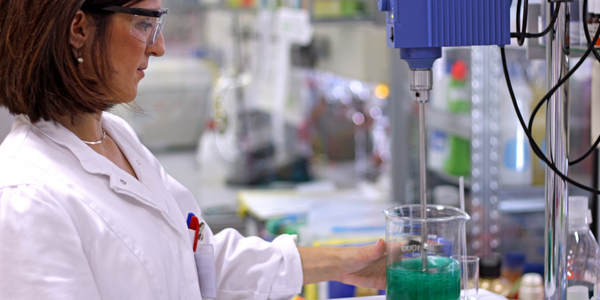Customer Company Size
SME
Region
- America
- Asia
- Europe
Country
- Taiwan
- United States
Product
- Acumatica Financial Management
- Acumatica Distribution Management
- Acumatica Customer Management
- JAAS Advanced Manufacturing Software (JAMS)
Tech Stack
- Cloud-based technology
Implementation Scale
- Enterprise-wide Deployment
Impact Metrics
- Customer Satisfaction
- Productivity Improvements
Technology Category
- Platform as a Service (PaaS) - Connectivity Platforms
Applicable Industries
- Chemicals
Applicable Functions
- Business Operation
- Sales & Marketing
Use Cases
- Inventory Management
- Supply Chain Visibility
Services
- Cloud Planning, Design & Implementation Services
About The Customer
Sciessent is a global company that offers chemical treatment products used in several industries, ranging from drinking water to clothing and footwear, medical devices, and surfaces such as flooring and counters. The products include antimicrobial, anti-odor and water repellent treatments. Sciessent has about 50 employees worldwide, primarily at offices in Massachusetts and Taiwan. The company was founded in 2000 as Algion Technologies and became Sciessent in 2011. In 2015, the firm decided to switch from Sage MAS 500 to Acumatica, resulting in improved connections with customers and enhanced productivity through mobile access.
The Challenge
Sciessent is a global company that offers chemical treatment products used in several industries. The company had utilized Sage MAS 500 for about seven years, and in 2015 they faced the loss of Sage support for MAS 500. Their partner recommended Acumatica as a way to replace and upgrade their financial management system. The company needed a solution that would improve their customer relations and make their business processes more fluid.
The Solution
Sciessent purchased Acumatica Financial Management, Distribution Management and Customer Management suites. They are also using JAAS Advanced Manufacturing Software (JAMS) from JAAS Systems, which is integrated with Acumatica. The key advantage of changing to Acumatica is mobility. The cloud-based system allows the staff to work from anywhere at any time. The new system is user-friendly and easier to navigate. The processes are simpler than the MAS 500 processes.
Operational Impact

Case Study missing?
Start adding your own!
Register with your work email and create a new case study profile for your business.
Related Case Studies.

Case Study
Honeywell - Tata Chemicals Improves Data Accessibility with OneWireless
Tata was facing data accessibility challenges in the cement plant control room tapping signals from remote process control areas and other distant locations, including the gas scrubber. Tata needed a wireless solution to extend its control network securely to remote locations that would also provide seamless communication with existing control applications.

Case Study
Advanced Elastomer Systems Upgrades Production
In order to maintain its share of the international market for thermoplastic elastomers AES recently expanded its Florida plant by adding a new production line. While the existing lines were operating satisfactorily using a PROVOX distributed control system with traditional analog I/O, AES wanted advanced technology on the new line for greater economy, efficiency, and reliability. AES officials were anxious to get this line into production to meet incoming orders, but two hurricanes slowed construction.
Case Study
Wireless GPS Tracking & Security Monitoring
Enhancing the security of hazardous freight and ensuring compliance with Homeland Security’s Transportation Security Administration mandate that all trains carrying chemicals capable of creating a toxic inhalation condition are equipped with on-board safety monitoring systems.

Case Study
Field Device Asset Management For Chemical Company in China
Chinese chemical subsidiary of multinational corporation serves customers throughout the world. Sales offices and research and technology centers are strategically located to provide rapid response to customer requests. Just two workers were assigned to maintain thousands of intelligent instruments in three production units, so they could do little more than react to device issues as they appeared. This costly maintenance method inevitably led to unexpected downtime when a critical instrument failed. Plant management recognized the need to change from reactive to predictive maintenance for all assets, including instruments and control valves, but help was needed in implementing such a technology-based initiative.

Case Study
Industrial Workforce Mobility for Improved Safety & Operations
Huntsman Corporation, a global manufacturer and marketer of differentiated chemicals, undertook an aggressive program to eliminate injuries, product defects, and environmental releases at their Port Neches facility. Termed “Project Zero”, this program required a completely mobile solution to empower operations and maintenance personnel to capture defects, track work progress and make process and safety related decisions in real-time.








